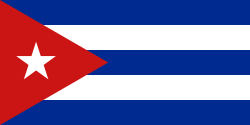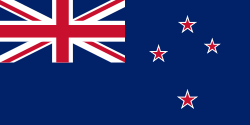Dick Fosbury
| Dick Fosbury | |||||||
| Voller Name | Richard Douglas Fosbury | ||||||
| Nation | |||||||
| Geburtstag | 6. März 1947 | ||||||
| Geburtsort | Portland (Oregon), Vereinigte Staaten | ||||||
| Größe | 193 cm | ||||||
| Gewicht | 83 kg | ||||||
| Sterbedatum | 12. März 2023 | ||||||
| Sterbeort | Salt Lake City, Vereinigte Staaten | ||||||
| Karriere | |||||||
|---|---|---|---|---|---|---|---|
| Disziplin | Hochsprung | ||||||
| Bestleistung | 2,24 m (1968) | ||||||
| Verein | Oregon State Beavers | ||||||
| Medaillenspiegel | |||||||
| |||||||
| |||||||
Richard Douglas „Dick“ Fosbury (* 6. März 1947 in Portland, Oregon; † 12. März 2023 in Salt Lake City, Utah[1]) war ein US-amerikanischer Leichtathlet. Er revolutionierte den Hochsprung durch den nach ihm benannten Fosbury-Flop, bei dem der Springer die Latte rückwärts überquert.
Mit seiner neuen Technik gewann er zunächst die amerikanische Olympiaausscheidung und am 20. Oktober 1968 die Goldmedaille bei den Olympischen Spielen 1968 in Mexiko-Stadt mit einer übersprungenen Höhe von 2,24 Meter. Obwohl seine Technik anfangs skeptisch beurteilt wurde, setzte sie sich in relativ kurzer Zeit durch und ist heute in abgewandelter Form die Standardtechnik des Hochsprungs.
Als Student der Oregon State University wurde er 1968 sowie 1969 NCAA-Meister im Freien und 1968 in der Halle. Nach der Saison 1969 trat er vom Leistungssport zurück.
Nach dem Ende seiner sportlichen Karriere studierte Fosbury Bauingenieurwesen, trat in ein Bau- und Vermessungsunternehmen in Ketchum im US-Bundesstaat Idaho ein und wurde später dessen Miteigentümer.[2]
2008 wurde bekannt, dass Fosbury an einer Krebserkrankung litt, die aber nach einer Operation und Chemotherapie 2009 als überstanden galt.[3] Seit 2019 war er in der Lokalpolitik im Blaine County aktiv.
Dick Fosbury starb am 12. März 2023 im Alter von 76 Jahren an den Folgen von Lymphdrüsenkrebs.
Weblinks
- Dick Fosbury in der Datenbank von Olympedia.org (englisch)
- Zirkus oder Genickbruch: Fosbury wird 60. In: Kölner Stadtanzeiger. 2. März 2007.
- Hochsprung: Der Gold-Flop-Schöpfer wird 60. In: Focus Online. 7. März 2007.
- Dick Fosbury wird 60: Der Flop, der zum Hit wurde. In: FAZ.net. 6. März 2007, archiviert vom am 22. Januar 2012.
- Michael Reinsch: Dick Fosbury wird 65: „Der faulste Springer der Welt“. In: FAZ.net. 6. März 2012, archiviert vom am 7. März 2012.
- Fosbury revolutioniert den Hochsprung in Mexiko-Stadt 1968 – The Olympics On The Record. (Streaming-Video; 4:23 Minuten) In: Olympic Channel auf YouTube. 1. April 2018 (englisch).
- Peter Hartmann: „Wendepunkte der Sportgeschichte“: Als Dick Fosbury den Hochsprung revolutionierte – und die Welt plötzlich auf dem Rücken lag. In: NZZ.ch. 14. April 2020.
Einzelnachweise
- ↑ Tobias Laure: Leichtathletik-Legende Dick Fosbury gestorben. In: eurosport.de. 13. März 2023, abgerufen am 13. März 2023.
- ↑ Galena Engineering – Personnel. In: galena-engineering.com. Archiviert vom am 9. Februar 2015; abgerufen am 23. November 2020 (englisch).
- ↑ Dick Fosbury und der Flop: Der überforderte Revolutionär. In: Sport1.de. 23. November 2020, abgerufen am 23. November 2020.
| Personendaten | |
|---|---|
| NAME | Fosbury, Dick |
| ALTERNATIVNAMEN | Fosbury, Richard Douglas (wirklicher Name) |
| KURZBESCHREIBUNG | US-amerikanischer Hochspringer |
| GEBURTSDATUM | 6. März 1947 |
| GEBURTSORT | Portland (Oregon), Oregon |
| STERBEDATUM | 12. März 2023 |
| STERBEORT | Salt Lake City, Utah |
Auf dieser Seite verwendete Medien
Pictograms of Olympic sports – . This is an unofficial sample picture. Images of official Olympic pictograms for 1948 Summer Olympics and all Summer Olympics since 1964 can be found in corresponding Official Reports.
Autor/Urheber: B1mbo, Lizenz: CC BY-SA 2.5
Zeichnung einer Goldmedaille, basierend auf Olympic rings.svg.
Autor/Urheber: B1mbo, Lizenz: CC BY-SA 2.5
Zeichnung einer Silbermedaille, basierend auf Olympic rings.svg.
Autor/Urheber: B1mbo, Lizenz: CC BY-SA 2.5
Zeichnung einer Bronzemedaille, basierend auf Olympic rings.svg.
Olympic Rings without "rims" (gaps between the rings), As used, eg. in the logos of the 2008 and 2016 Olympics. The colour scheme applied here was specified in 2023 guidelines.
US Flag with 44 stars. In use 4 July 1891–3 July 1896. Created by jacobolus using Adobe Illustrator, and released into the public domain.
US Flag with 44 stars. In use 4 July 1891–3 July 1896. Created by jacobolus using Adobe Illustrator, and released into the public domain.
US Flag with 45 stars. In use 4 July 1896–3 July 1908. Created by jacobolus using Adobe Illustrator, and released into the public domain. This flag was used during the Spanish-American War.
US Flag with 45 stars. In use 4 July 1896–3 July 1908. Created by jacobolus using Adobe Illustrator, and released into the public domain. This flag was used during the Spanish-American War.
US Flag with 46 stars. In use 4 July 1908–3 July 1912. Created by jacobolus using Adobe Illustrator, and released into the public domain.
Other version: Image:US 46 Star Flag.svgUS Flag with 46 stars. In use 4 July 1908–3 July 1912. Created by jacobolus using Adobe Illustrator, and released into the public domain.
Other version: Image:US 46 Star Flag.svgUS Flag with 48 stars. In use for 47 years from July 4, 1912, to July 3, 1959.
The Canadian Red Ensign used between 1921 and 1957.
This image has compared for accuracy (mainly colors) using an image from World Statesmen. The only change is making the maple leaves green from red. This image has compared for accuracy (mainly colors) using an image from World Statesmen. The most recent version of this image has changed the harp into one with a female figure; see [http://flagspot.net/flags/ca-1921.html FOTW
The Canadian Red Ensign used between 1921 and 1957.
This image has compared for accuracy (mainly colors) using an image from World Statesmen. The only change is making the maple leaves green from red. This image has compared for accuracy (mainly colors) using an image from World Statesmen. The most recent version of this image has changed the harp into one with a female figure; see [http://flagspot.net/flags/ca-1921.html FOTW
Flag of Australia, when congruence with this colour chart is required (i.e. when a "less bright" version is needed).
See Flag of Australia.svg for main file information.(c) I, Cmapm, CC BY-SA 3.0
The flag of the Soviet Union (1955-1991) using a darker shade of red.

(c) I, Cmapm, CC BY-SA 3.0
The flag of the Soviet Union (1955-1991) using a darker shade of red.

Flag of Second Polish Republic and later People's Republic of Poland in period from March 29, 1928 to March 10, 1980. Red shade used here is HTML "vermilion" #E34234. Proportion 5:8.
Flag of Second Polish Republic and later People's Republic of Poland in period from March 29, 1928 to March 10, 1980. Red shade used here is HTML "vermilion" #E34234. Proportion 5:8.
Die Staatsflagge der Deutschen Demokratischen Republik, vom 1. Oktober 1959 bis 3. Oktober 1990
Flag of Canada introduced in 1965, using Pantone colours. This design replaced the Canadian Red Ensign design.
Autor/Urheber: Los Angeles Times, Lizenz: CC BY 4.0
High jumper Dick Fosbury clearing the bar during 1968 Olympic trials at Los Angeles Memorial Coliseum


























